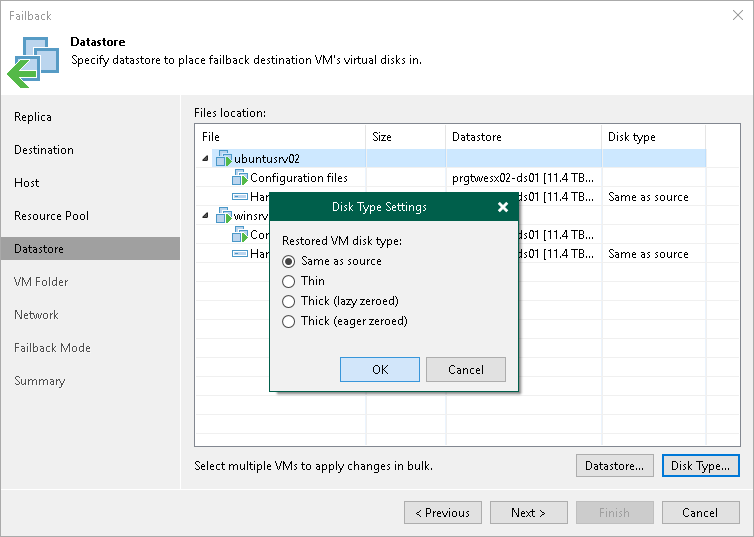

For more information about vmkfstools, see Using vmkfstools below. The vmkfstools utility maintains the thinness of a volume disk when it makes a clone. For more information about the file copy approach to backup, see File Copy Approach below. Most file copy approaches to backup will make a byte-for-byte copy, which results in the creation of a fat clone of a thin disk. Note that some methods of cloning preserve thin provisioning and some do not. This means that they only take up as much space as they need on the datastore, up to a set capacity limit. VSphere Integrated Containers creates VMDK volumes as thin, lazy zeroed disks. For more information about cloning volumes, see Datastore Approach below. As such, currently the only way to back up volume disks is to clone them. This is by design, so that disks are not deleted when a container is deleted, but the disks are also not subject to snapshots. This can protect against corruption, hardware failure, and deletion.Ĭontainer VMs are not designed for snapshots to be taken, and volume disks are mounted as independent persistent disks. Snapshots can protect against data corruption, but they do not protect against datastore hardware failure or accidental deletion, unless you clone and move the snapshot.Ĭloning a VM or a disk performs a deep copy that you can move to a different datastore and bring back in its entirety. Taking a snapshot of a VM or disk allows its state to be frozen in time on the same datastore and potentially restored at a future date. Tools such as vmkfstools provide one way to ensure that a virtual disk is cloned properly.


This is because in vSAN, virtual disk data is a hidden object, so only the metadata can be seen. Backup solutions have file-based backup and restore, but whether or not this is the correct approach depends on the characteristics of the datastore.įor example, tar and untar will work with virtual disks on a FreeNAS, ZFS, or iSCSI setup, but will not work with VMware vSAN. They might not allow you to back up virtual disks on their own. Most commercial backup solutions focus on making clones or snapshots of a VM. However, there are some important caveats to this. Provisioning Container VMs in the Management PortalĬonfiguring Links for Templates and ImagesĬonfiguring Health Checks for Templates and Imagesīacking up a VMDK volume involves copying the virtual disk to a new location. Perform a Vulnerability Scan on a Single ImageĬreate New Networks for Provisioning Containers
#Veeam replicating vmdk files from datastore full#
Missing Common Name Error Even When TLS Options Are Specified CorrectlyĬertificate Errors when Using Full TLS Authentication with Trusted CertificatesĪdd Viewers, Developers, or DevOps Administrators to ProjectsĪdd Hosts with No TLS Authentication to the Management PortalĪdd Hosts with Server-Side TLS Authentication to the Management PortalĪdd Hosts with Full TLS Authentication to the Management PortalĬonfigure Scheduled Vulnerability Scan on All ImagesĬonfigure Vulnerability Scanning on a Per-Project Level

Obtain General VCH Information and Connection Details View Individual VCH and Container Information Contents of the vSphere Integrated Containers Engine BinariesĮnvironment Prerequisites for VCH Deploymentĭeploy a VCH to an ESXi Host with No vCenter Serverĭeploy a VCH to a Basic vCenter Server Cluster


 0 kommentar(er)
0 kommentar(er)
